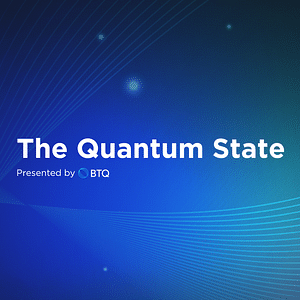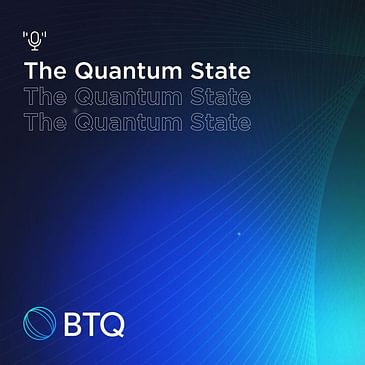🔐 **Exploring Quantum Threats to Blockchain: A Deep Dive with Or Sattath and Bolton Bailey** 🚀
Join us for a fascinating conversation with researchers Or Sattath and Bolton Bailey as they unpack the intricate relationship between quantum computing and blockchain technology. This episode delves deep into the vulnerabilities of blockchain to quantum attacks and the revolutionary changes that quantum computers could bring to this technology.
🌌 **Quantum Intricacies: Digital Signatures and Proof of Work Under Threat** Learn about how quantum computers could disrupt blockchain systems through advanced cryptographic attacks, such as the notorious 51% attack, by exploiting the weaknesses in digital signatures and proof of work mechanisms.
🛡️ **Mitigating Quantum Risks: The Role of Post-Quantum Digital Signatures** Discover the crucial role of post-quantum digital signatures as a defense strategy and the importance of transitioning to quantum-resistant cryptographic methods to safeguard blockchain from potential quantum threats.
🔍 **Quantum Miners vs. Classical Miners: A New Challenge for Blockchain** Understand the distinct behavior of quantum miners compared to classical miners, the necessity for protocol modifications to prevent forks, and ensure the stability and security of blockchain networks in the quantum era.
⚙️ **Complexity of Quantum Attacks and the Quantum Canary** Or Sattath and Bolton Bailey explore the complexity of potential quantum attacks on blockchain, discussing the factors like quantum hash power and the performance of quantum computers. They also highlight the importance of a quantum canary as an early warning system against quantum threats.
🎙️ **Engaging Discussions on:** - The lack of awareness and interest within the blockchain community about quantum vulnerabilities. - Financial motivations behind quantum attacks, such as market manipulation strategies like shorting Bitcoin. - The challenges regulators face in keeping up with the rapid advancements in quantum technology.
🕰️ **Chapters:** - 00:00 Introduction and Background - 07:03 Blockchains and Quantum Computers - 16:09 The 51% Attack via Difficulty Increase - 38:12 Vulnerabilities of Blockchain to Quantum Computing - 45:41 Playing with Timestamps in Quantum Attacks - 56:40 Legal and Financial Implications of Quantum Attacks - 01:04:37 The Importance of a Quantum Canary
🔔 **Stay Updated:** Hit the subscribe button and ring the bell to catch more insightful episodes on The Quantum State podcast, where we dive into the intersections of quantum technologies and blockchain. Get ahead of the curve in understanding how quantum advancements will shape the future of digital security and technology.
💬 **Did you find this podcast useful?** Share your thoughts and questions in the comments below to join the conversation on quantum computing's impact on blockchain technology!
👉 For more episodes and updates, check out https://www.youtube.com/thequantumstate
Keywords: #QuantumComputing #BlockchainTechnology #DigitalSecurity #QuantumThreats #Cryptocurrency




